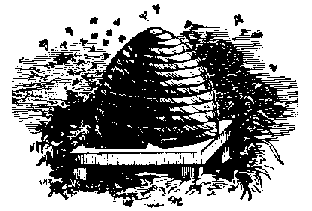SYMBOLISM OF THE BEE
by Harold Meij

The beehive is an important symbol in the third degree,
and it is extensively mentioned in the lecture where it is depicted as a
symbol of industry, hence the work of the Lodge, so that Masons should
continue to learn in all stages of life. Bees are able to accomplish large
tasks because they cooperate in force, a single bee can do very little.
This is in parallel to Masonry, where strength is gained by the active
participation of all its members. The bee is also the emblem of several
Greco-Roman and Indian gods, including Cupid and Kama, both gods of love.
The Egyptians believed that bees were born from the tears of the Sun-god,
Ra. Bees are also depicted on many ancient tombs, as symbols of the
afterlife and resurrection. This probably came from the fact that bees do
not leave their hive during the three month hibernation period, only to
reappear later. Some compared this to Christís resurrection, whereby his
body vanished for three days, only to reappear after the resurrection.
Furthermore, beesí honey and sting are also associated with Christ and
Judgment Day. In Ireland bees were legally protected, for they produce
honey which in turn produces mead, the drink of immortality that flows in
the Otherworld. In Christian allegory a queen bee sometimes represents the
Virgin Mary, the hive symbolizing the Church. The coat of arms of Pope
Urban VIII and Napoleon I, for example, depicts several
bees. back to top |
![]()






